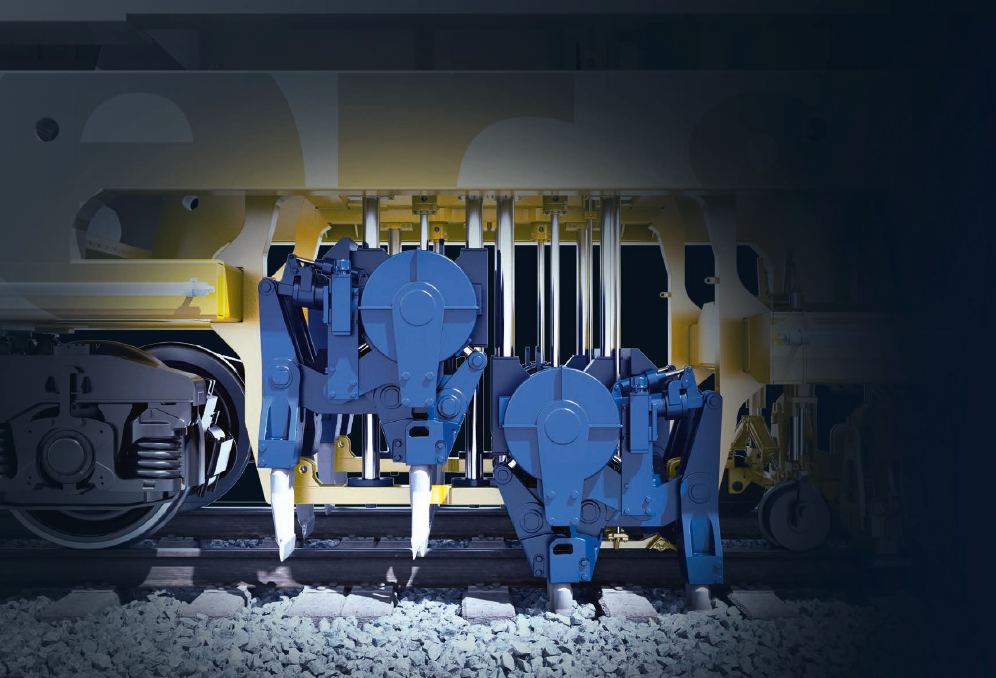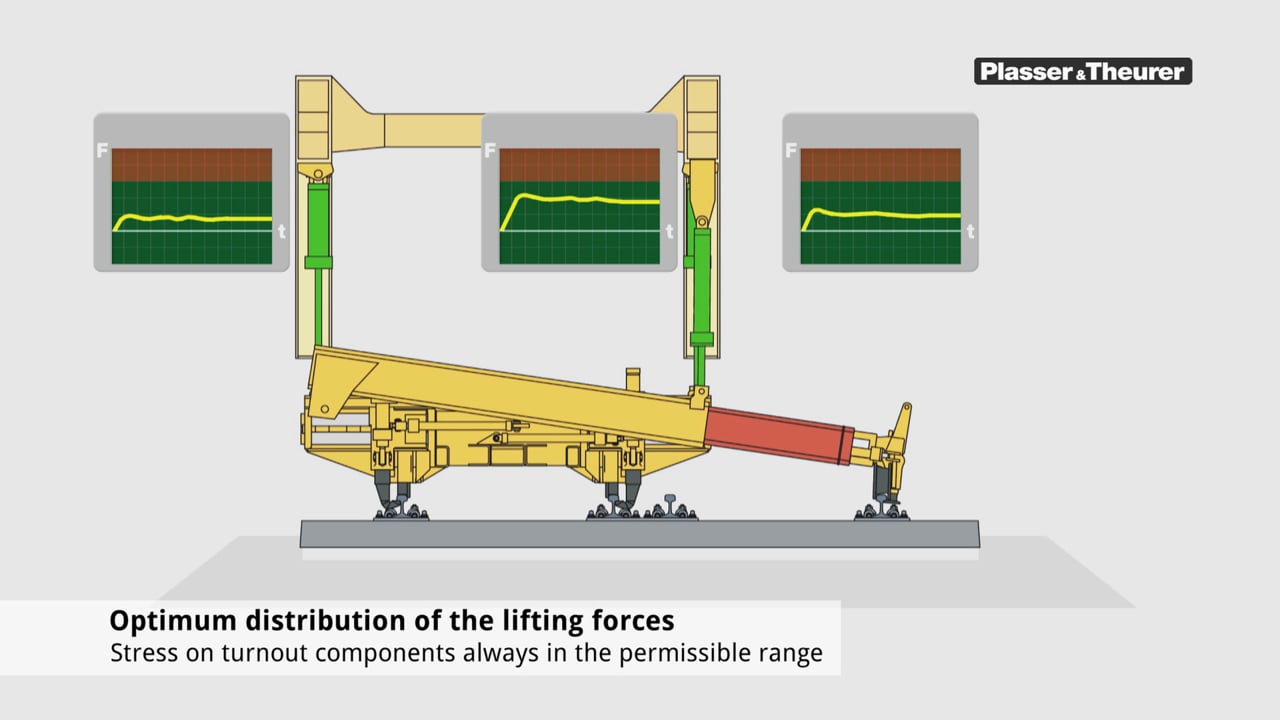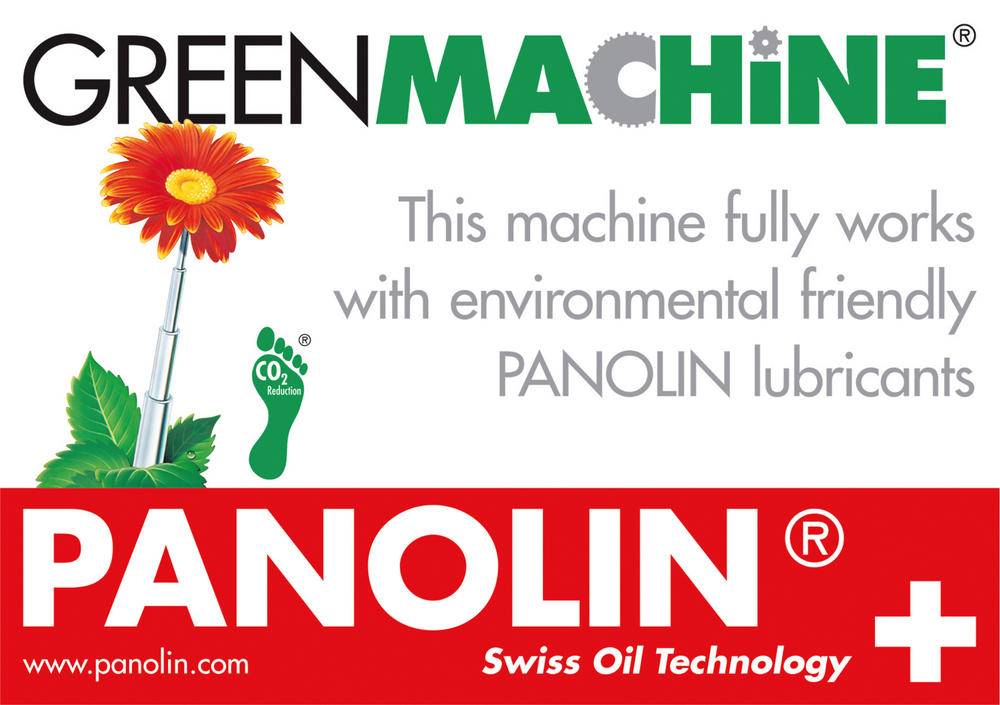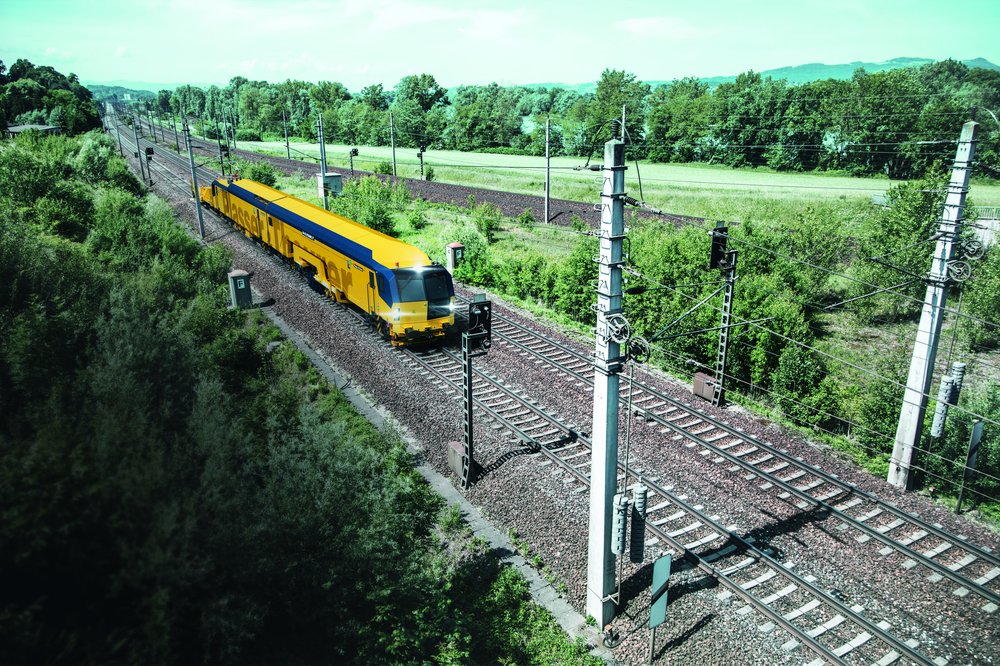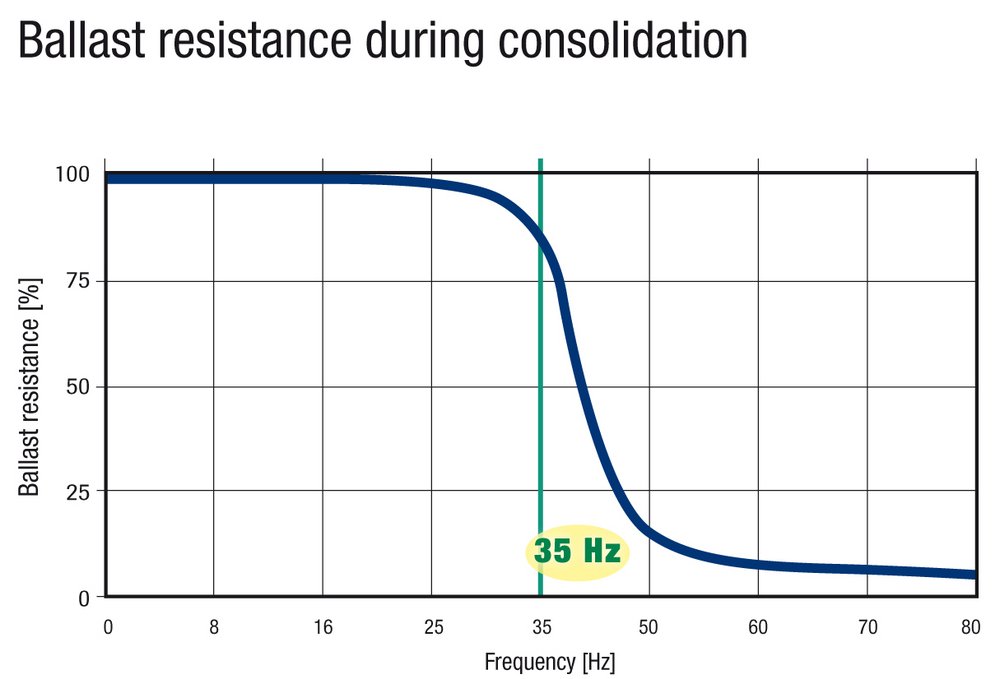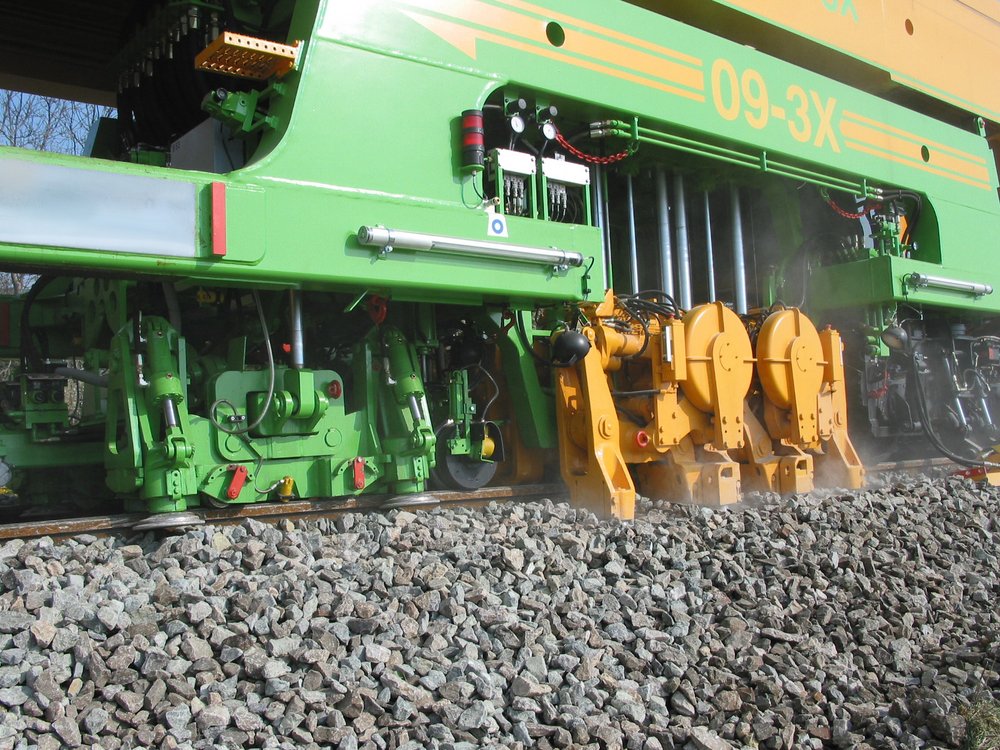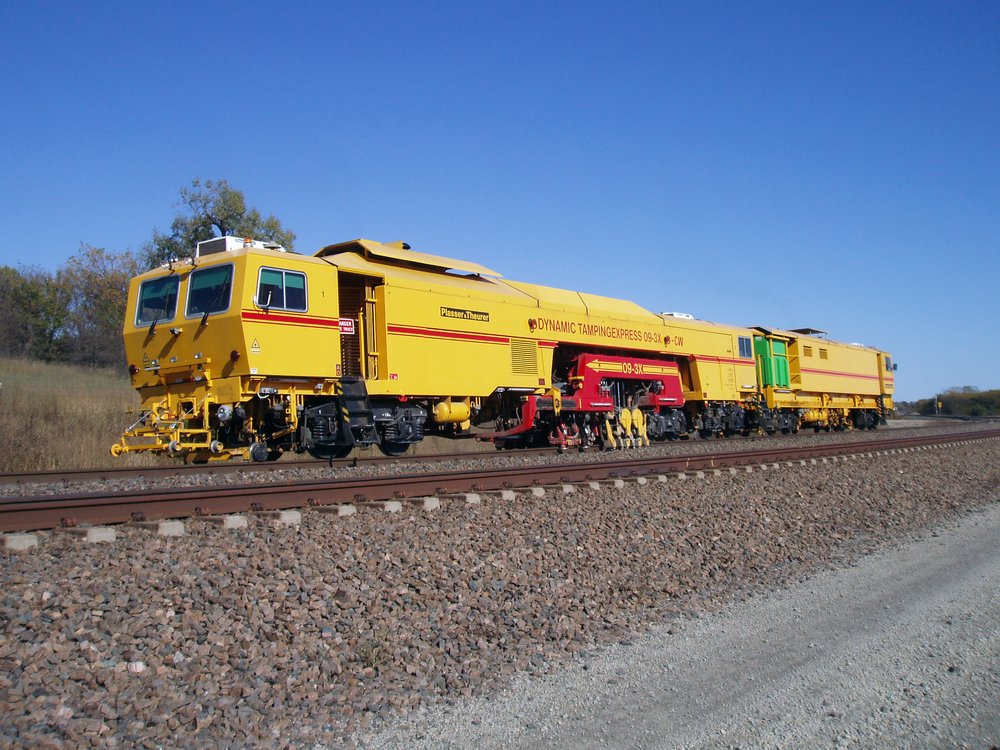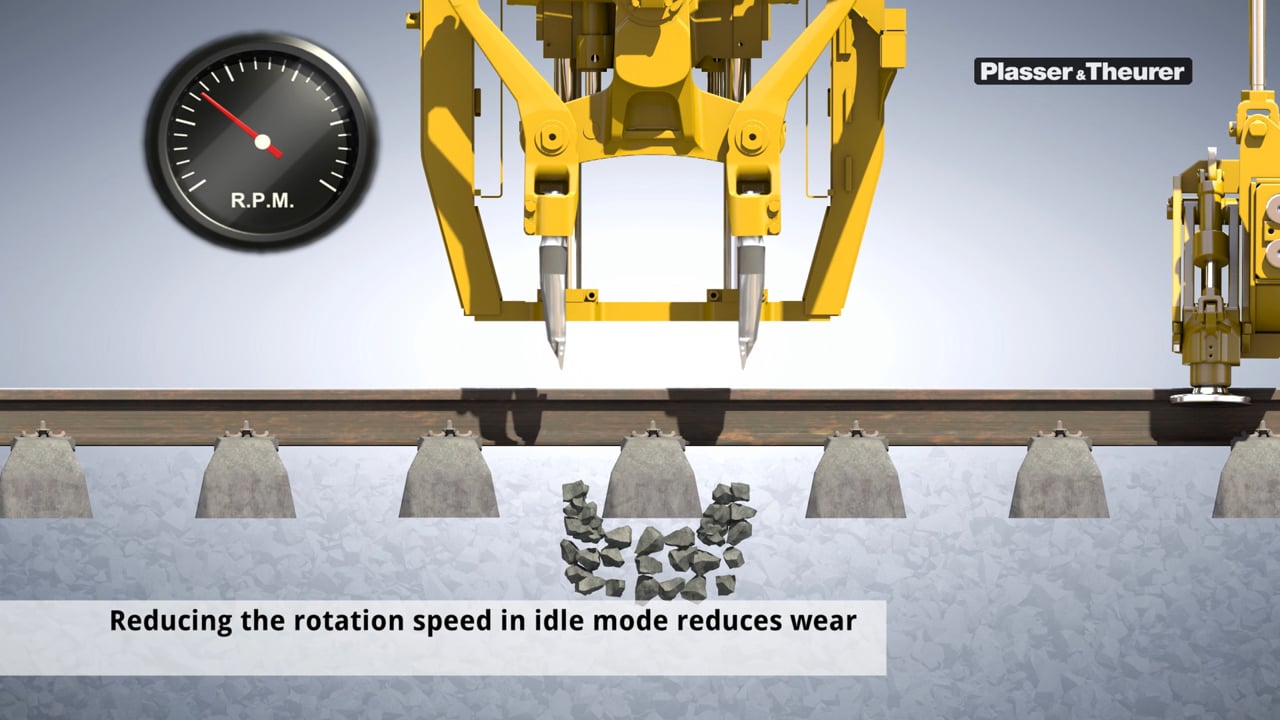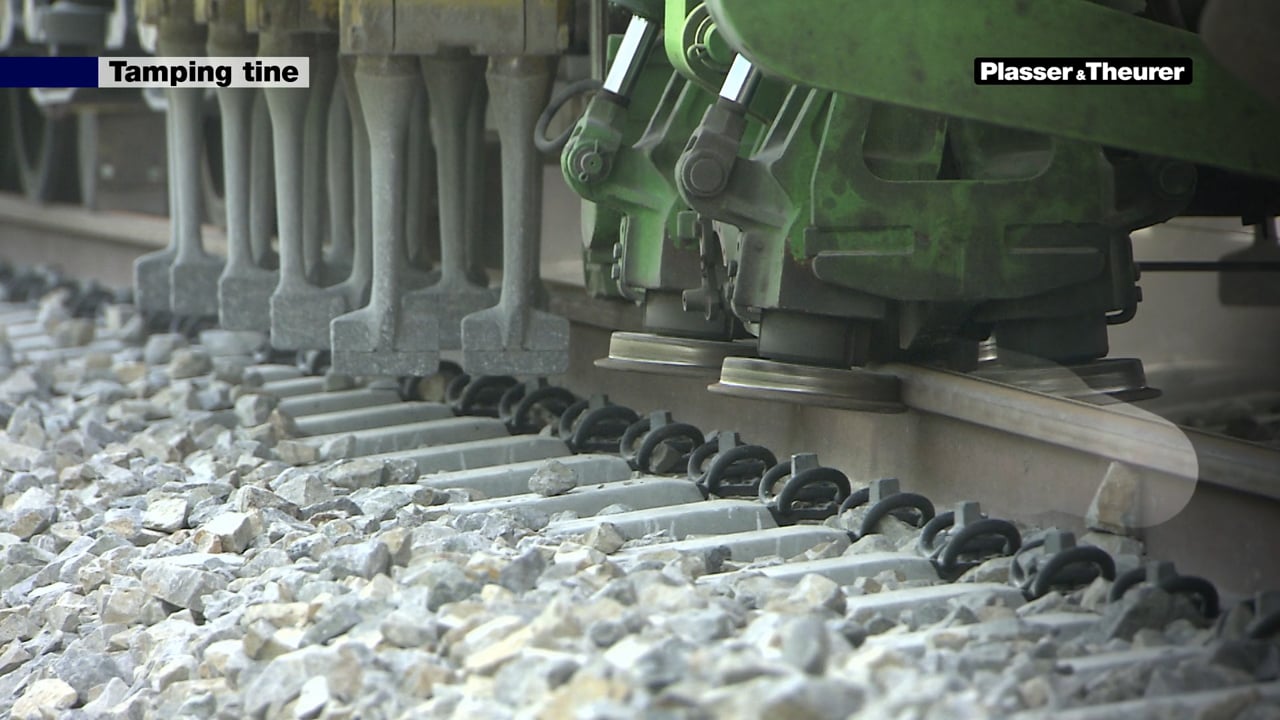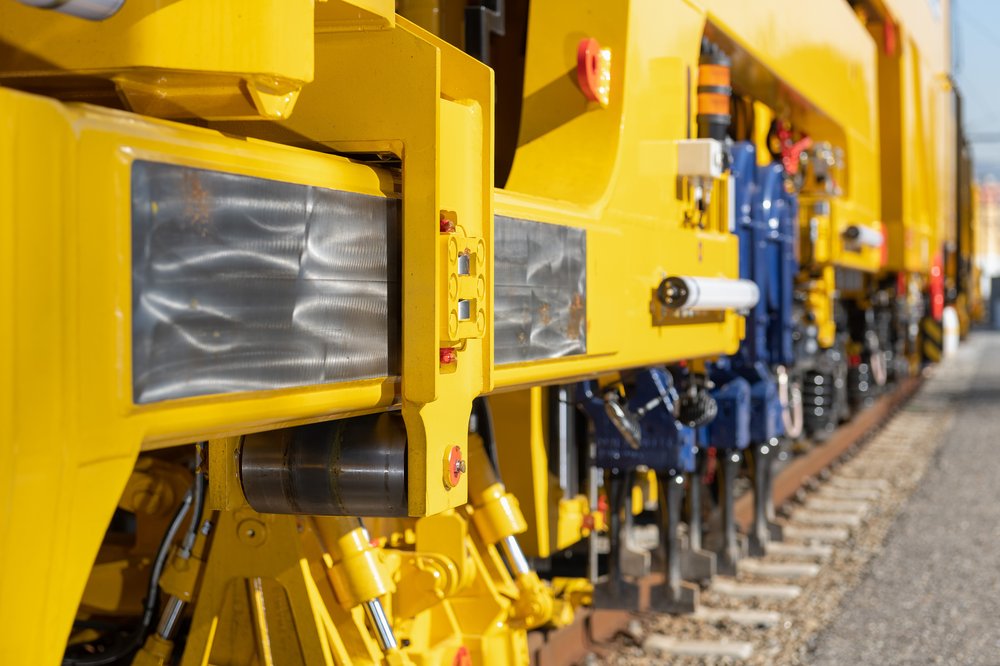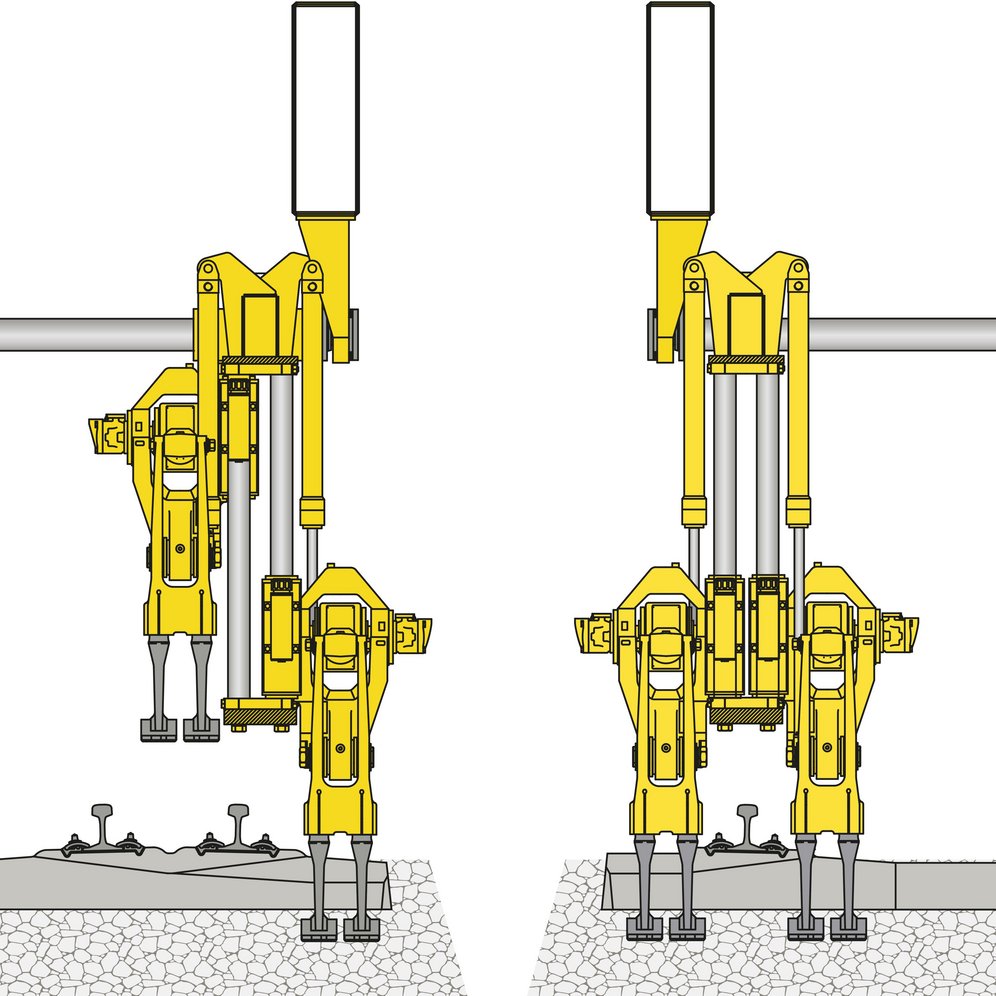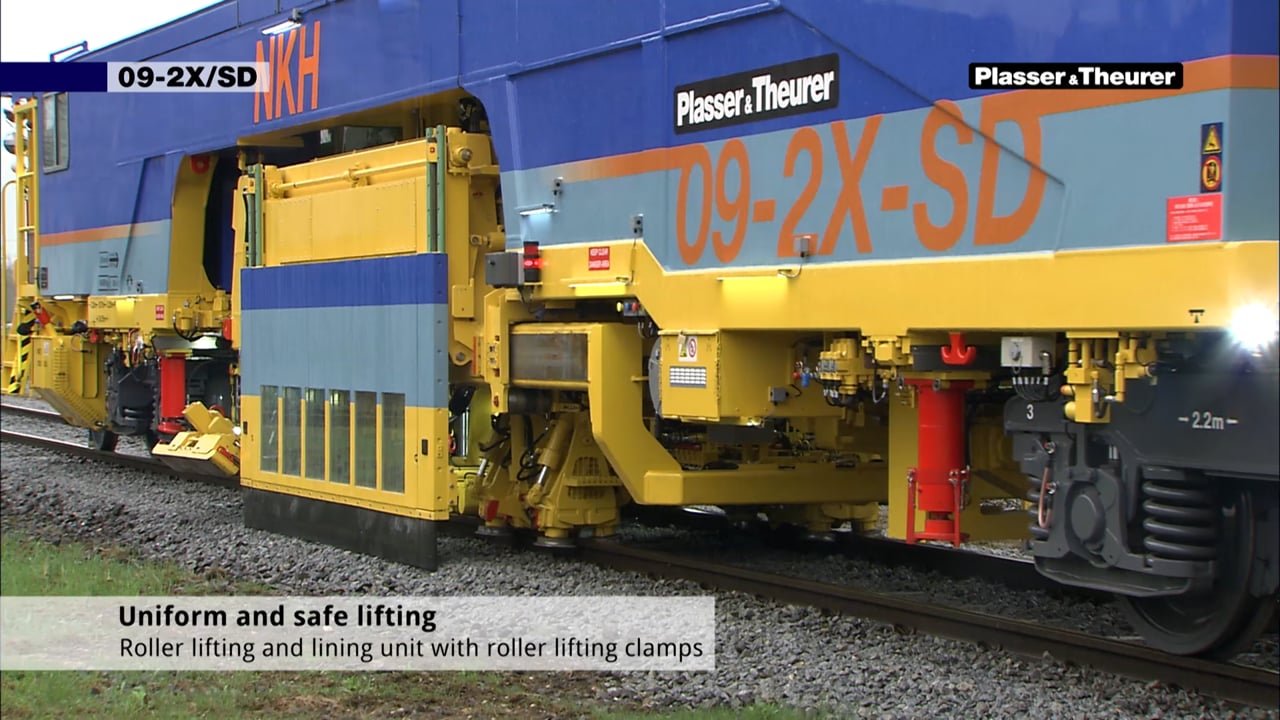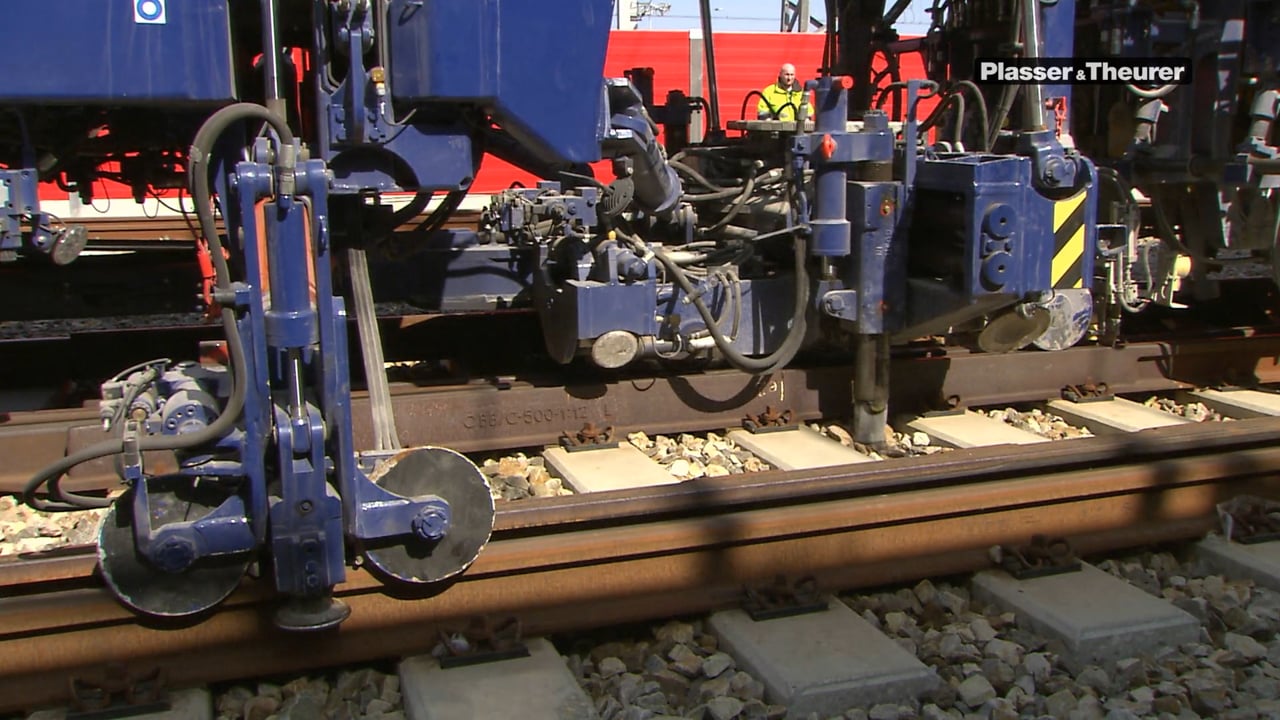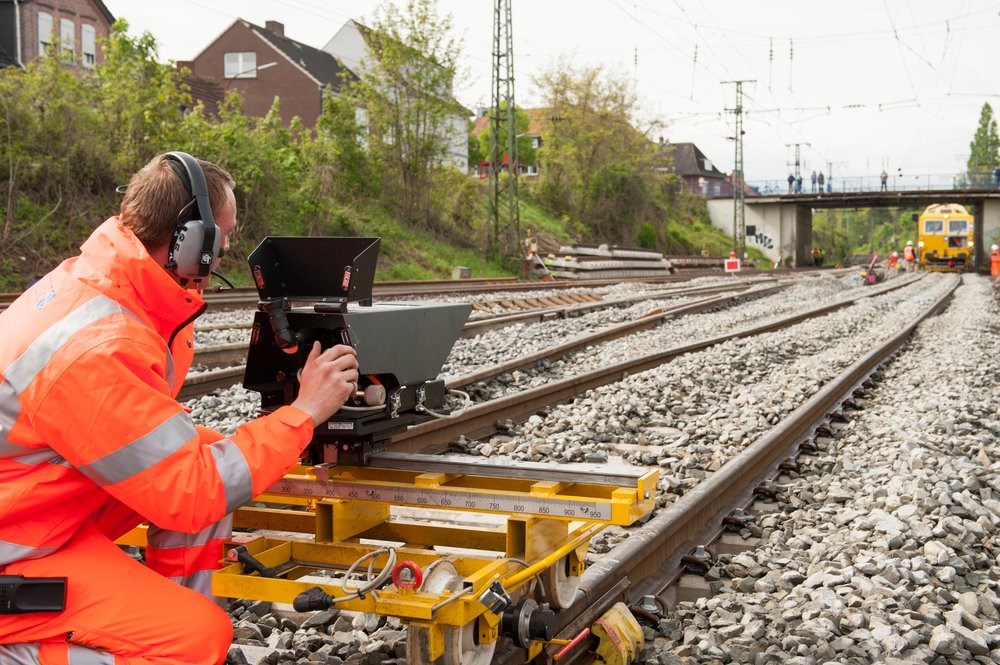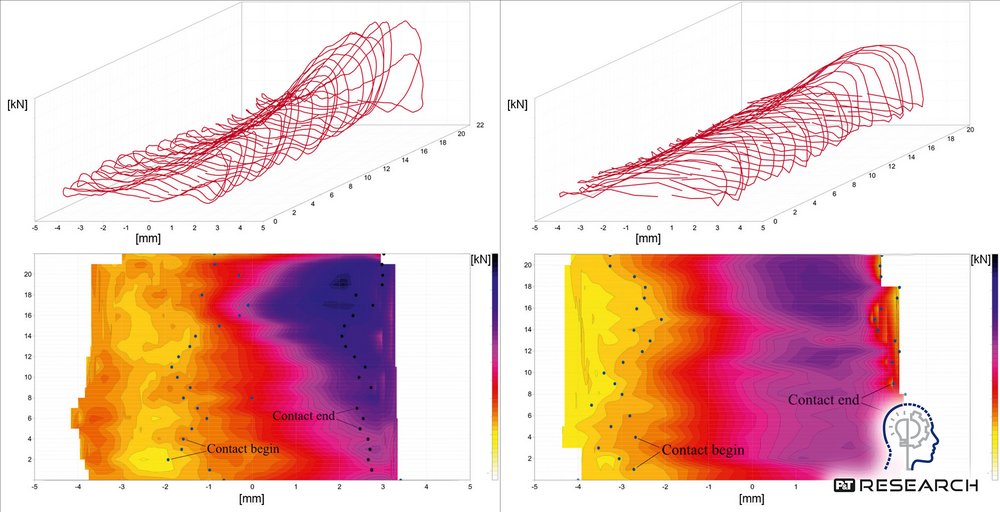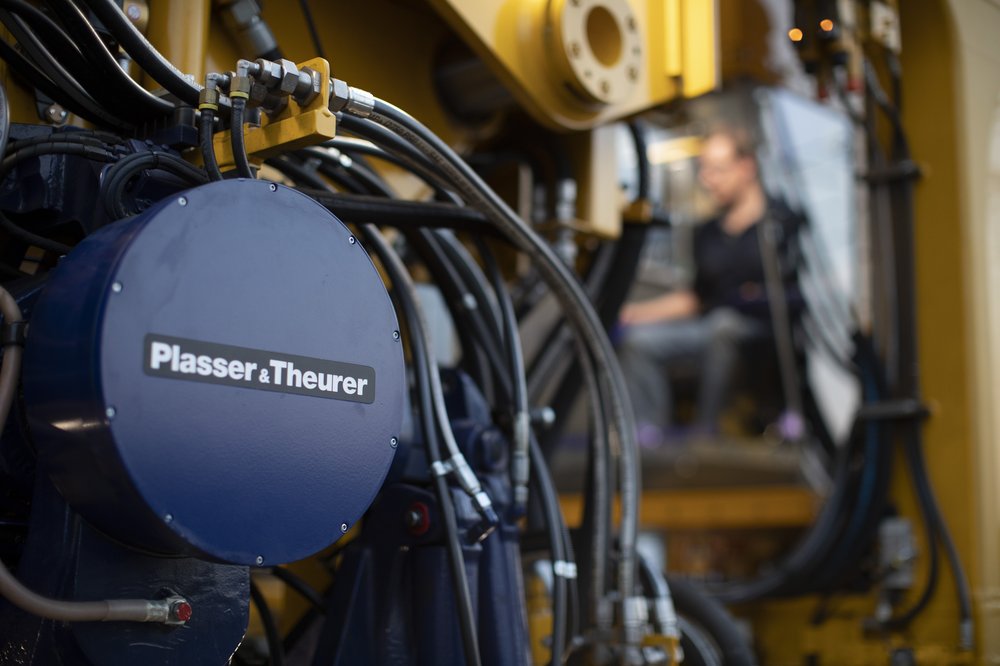PrecisionSustainabilityOn the basis of many years of experience, Plasser & Theurer has developed various lifting and lining units which fulfil both requirements and are well suited for specific operating conditions.
ROLLER LIFTING AND LINING UNIT
This work unit is fitted with two lining rollers and two roller lifting clamps per rail, gripping the rail under the rail head. They lift and line in one operation.
COMBINED LIFTING AND LINING UNIT FOR TURNOUTS AND PLAIN TRACK
This work unit has lifting hooks and lining rollers. On request, it is possible to mount additional roller lifting clamps. Lifting and lining is performed in one operation. The lifting hooks can be applied either under the rail head or under the rail base. The entire work unit can also be displaced in longitudinal direction. This ensures that the work unit can be adapted to every situation during turnout maintenance, achieving an optimum lifting and lining process.
